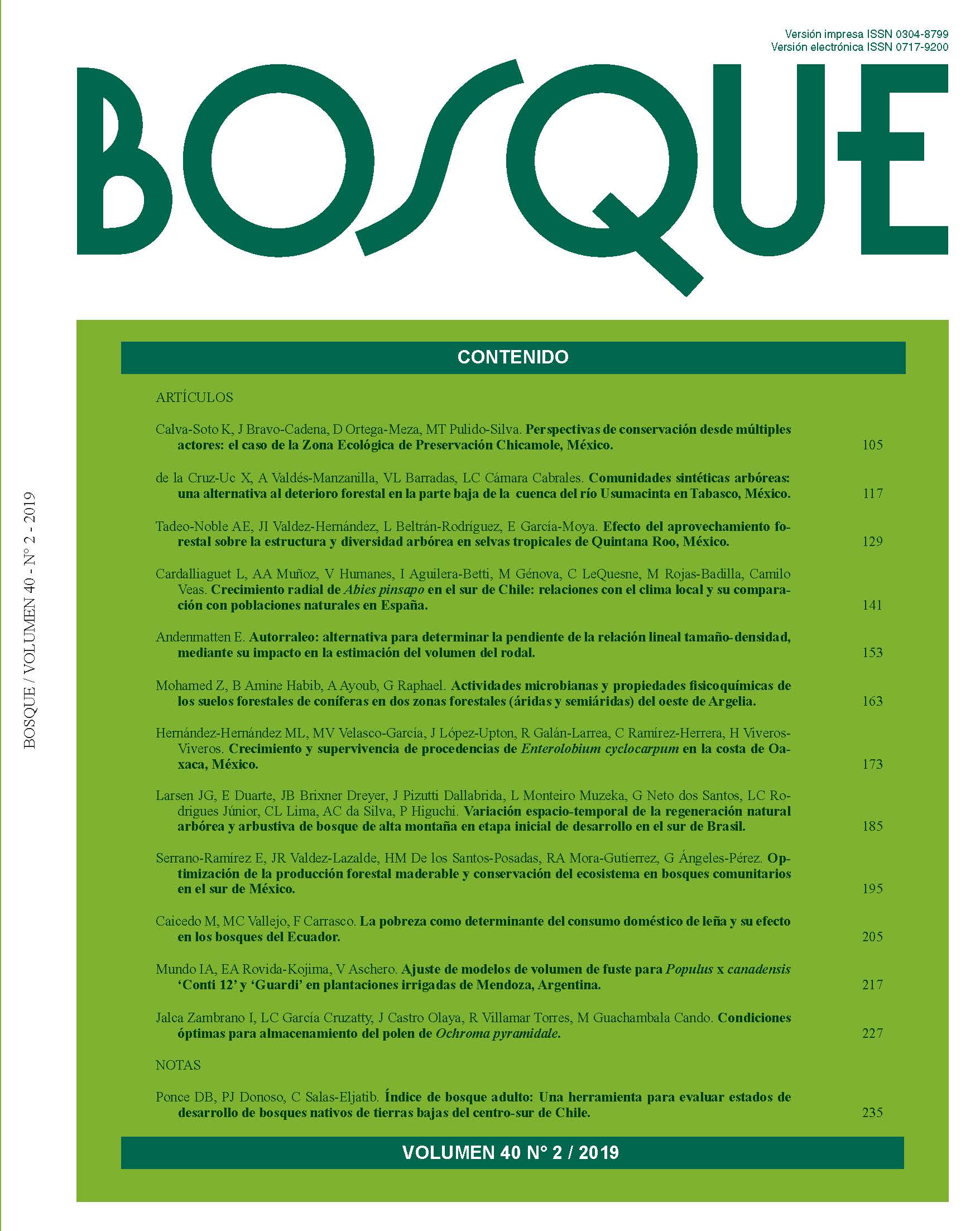Main Article Content
Aug 6, 2019
Abstract
Stand density indices are used to design production tables, density management diagrams and growth simulators and to establish thinning regimes, the most widespread being the Reineke stand index. Some species can be grouped with the same slope as indicated by Reineke, however there are works that propose making fits by species. There are different methodologies for this; which, in turn, can generate different values among themselves, even for the same sample available. An alternative is presented to determine the slope of the Reineke line, using another density index and the estimate of the stand volume. This is estimated using a multiple linear model, by making iterative changes in one of its variables, the stand density index according to Curtis. The evaluation is done observing the improvement of the statistical estimators of the relationship “observed volume vs. estimated volume”. The tests carried out on plantations of Pinus contorta in Patagonia differ from the results obtained in Oregon-USA; a difference that may correspond not only to the applied method, but also to the available sample. For P. elliottii and P. taeda in the Valley of Calamuchita, Argentina, results coincide with studies in their regions of origin. It is considered for the analyzed cases, that neither the difference nor the coincidence is enough to reject or accept the proposal definitively. Additionally, two alternatives are presented to establish the intercept of the line, one visual and one based on the statistical parameters of the sample.


